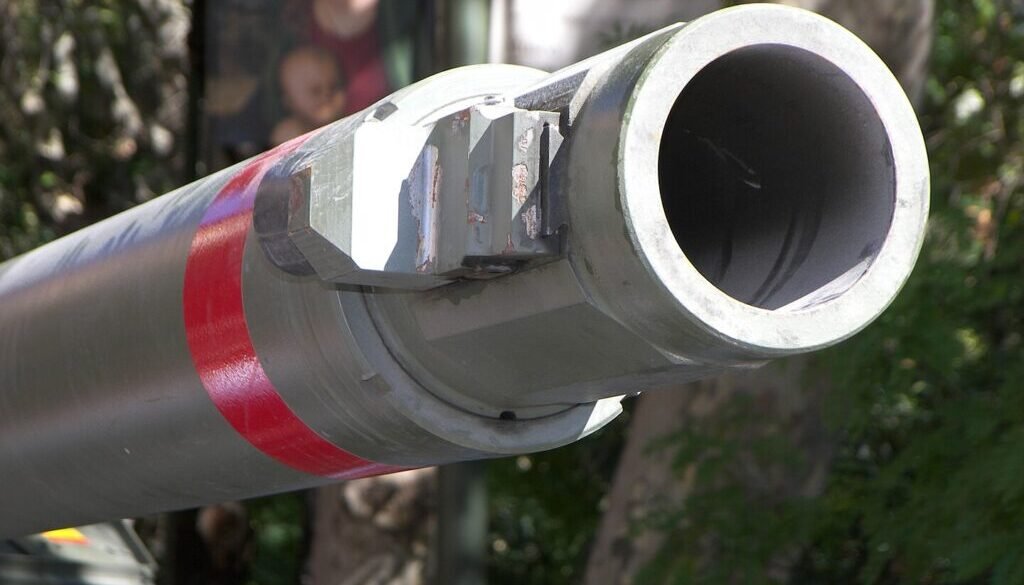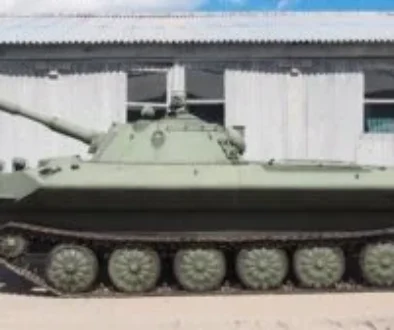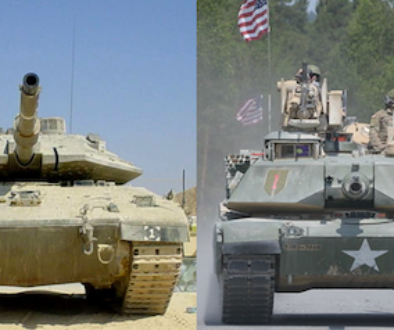Differences in Armor Doctrine and Operational Impact
In the realm of armored warfare, the choice between smoothbore and rifled tank guns has long been a subject of debate and consideration among military planners, engineers, and tacticians. Both types of guns offer unique advantages and capabilities, each influencing armor doctrine and operational tactics in distinct ways. Here, we explore the differences between smoothbore and rifled tank guns, examining their respective strengths, weaknesses, and the armor doctrine considerations that guide their selection in modern armored vehicles.
Smoothbore Tank Guns:
Smoothbore tank guns have been a staple of armored warfare since their introduction in the mid-20th century. Unlike rifled guns, which feature grooves cut into the barrel to impart spin to the projectile, smoothbore guns have a smooth, cylindrical bore that allows for the firing of fin-stabilized ammunition. This design offers several advantages in terms of armor penetration, projectile velocity, and ammunition compatibility.
Advantages of Smoothbore Tank Guns:
Higher Muzzle Velocity: Smoothbore tank guns typically achieve higher muzzle velocities than rifled guns, resulting in increased projectile energy and armor penetration capabilities. This higher velocity is achieved by reducing friction between the projectile and the barrel, allowing for greater acceleration and kinetic energy transfer upon impact.
Improved Ammunition Compatibility: Smoothbore tank guns are compatible with a wider range of ammunition types, including armor-piercing fin-stabilized discarding sabot (APFSDS) rounds, high-explosive anti-tank (HEAT) rounds, and high-explosive squash head (HESH) rounds. This versatility allows for greater flexibility in engaging different types of targets, from armored vehicles to fortified positions and soft targets.
Reduced Barrel Wear: The absence of rifling in smoothbore tank guns results in reduced barrel wear and erosion, leading to longer service life and improved reliability. This allows for sustained accuracy and performance over extended periods of use, minimizing the need for frequent barrel replacement or maintenance.
Enhanced Accuracy at Longer Range: Smoothbore tank guns are often capable of achieving greater accuracy at longer ranges compared to rifled guns, thanks to their higher muzzle velocities and streamlined projectiles. This enables tank crews to engage targets with precision at extended distances, increasing the lethality and effectiveness of the weapon system.
Rifled Tank Guns:
Rifled tank guns, characterized by their spiral grooves cut into the barrel, have a long and storied history in armored warfare. While they have been largely superseded by smoothbore guns in many modern armored vehicles, rifled guns still offer certain advantages in terms of accuracy, versatility, and ammunition compatibility, particularly in specialized roles and applications.
Royal Scots Dragoon Guards, Challenger II, main battle tank prepares to fire its main gun on a target during a training exercise Nov. 17, 2008, in Basra, Iraq.
Advantages of Rifled Tank Guns:
Enhanced Accuracy and Stability: Rifled tank guns benefit from the spin imparted to the projectile by the rifling, which stabilizes the trajectory and improves accuracy over long distances. This gyroscopic stability helps to maintain projectile orientation and flight path, resulting in greater precision and lethality against distant targets.
Versatility with Conventional Ammunition: Rifled tank guns are compatible with a wide range of conventional ammunition types, including armor-piercing discarding sabot (APDS) rounds, high-explosive squash head (HESH) rounds, and canister rounds. This versatility allows for flexible engagement of different target types and operational scenarios, without reliance on specialized fin-stabilized ammunition.
Effective Use of High Explosive (HE) Rounds: Rifled tank guns are well-suited for the use of high explosive (HE) rounds, which rely on the explosive force to defeat enemy targets rather than armor penetration. These rounds are effective against soft targets, infantry positions, and light armored vehicles, providing the tank crew with a versatile and lethal weapon system.
Potential for Dual-Purpose Ammunition: Rifled tank guns have the potential to fire dual-purpose ammunition, which combines armor-piercing and high-explosive capabilities in a single round. This allows for the engagement of both armored and soft targets with the same projectile, increasing operational flexibility and efficiency on the battlefield.
Armor Doctrine Considerations:
The choice between smoothbore and rifled tank guns is influenced by a variety of factors, including operational requirements, technological advancements, and doctrinal considerations. Armor doctrine, which encompasses the tactics, techniques, and procedures for employing armored forces in combat, plays a crucial role in determining the optimal gun type for a given armored vehicle.
Armor Penetration vs. Versatility: One of the primary considerations in armor doctrine is the balance between armor penetration capabilities and ammunition versatility. Smoothbore tank guns excel in armor penetration, making them well-suited for engaging heavily armored targets at long range. However, rifled tank guns offer greater versatility with conventional ammunition types, allowing for flexible engagement of a wider range of targets.
Integration with Fire Control Systems: Another factor in armor doctrine is the integration of the tank gun with the vehicle’s fire control system. Smoothbore tank guns often benefit from advanced fire control systems, which are optimized for high-velocity fin-stabilized ammunition and long-range engagements. Rifled tank guns, on the other hand, may require additional adjustments and calibration to achieve optimal accuracy and performance with conventional ammunition types.
Operational Environment and Threat Assessment: The operational environment and threat assessment also play a significant role in determining the optimal gun type for a given armored vehicle. In environments where heavily armored adversaries are prevalent, such as peer-to-peer conflicts or mechanized warfare scenarios, smoothbore tank guns may offer a decisive advantage in terms of armor penetration and lethality. Conversely, in asymmetric warfare or counterinsurgency operations, rifled tank guns may provide greater flexibility and effectiveness against a wider range of targets.
Operational Impact and Case Studies:
To illustrate the differences in armor doctrine between smoothbore and rifled tank guns, we can examine their operational impact in specific conflicts and theaters of operation. Case studies such as the Gulf War, Operation Iraqi Freedom, and the ongoing conflict in Ukraine provide valuable insights into how different gun types have been employed and adapted to meet evolving threats and operational requirements.
Gulf War (1990-1991): During the Gulf War, both smoothbore and rifled tank guns were employed by coalition forces in combat operations against Iraqi armored forces. The M1A1 Abrams, equipped with a smoothbore M256 gun, proved highly effective in engagements against Iraqi T-72 and T-55 tanks, thanks to its superior armor penetration capabilities and advanced fire control system. Similarly, British Challenger 1 tanks, armed with rifled L11A5 guns, demonstrated accuracy and lethality in engagements against Iraqi armored vehicles and fortified positions.
Operation Iraqi Freedom (2003-2011): In Operation Iraqi Freedom, the M1A1 Abrams once again showcased the effectiveness of smoothbore tank guns in modern combat operations. The tank’s high muzzle velocity and advanced ammunition allowed for precision engagement of enemy targets at extended ranges, contributing to the rapid defeat of Iraqi armored forces and the liberation of major urban centers such as Baghdad and Basra. Meanwhile, British Challenger 2 tanks, armed with rifled L30 guns, faced challenges in urban combat environments due to the limitations of conventional ammunition and the need for precision engagement against insurgent forces.
Conflict in Ukraine (2014-Present): In the ongoing conflict in Ukraine, both smoothbore and rifled tank guns have been employed by Ukrainian and Russian armored forces in engagements against each other. Russian T-72 and T-90 tanks, equipped with smoothbore 2A46 guns, have demonstrated their lethality and armor penetration capabilities in engagements against Ukrainian armored vehicles and fortified positions. Meanwhile, Ukrainian T-64 and T-84 tanks, armed with rifled 125mm guns, have relied on conventional ammunition and precision engagement tactics to counter Russian advances and defend key strategic positions.
Conclusion:
In conclusion, the choice between smoothbore and rifled tank guns is a complex and multifaceted decision that is influenced by a variety of factors, including operational requirements, technological advancements, and doctrinal considerations. While smoothbore tank guns offer superior armor penetration capabilities and ammunition compatibility, rifled tank guns provide greater versatility with conventional ammunition types and potential for dual-purpose engagement. Ultimately, the optimal gun type for a given armored vehicle depends on the specific operational environment, threat assessment, and mission objectives. By understanding the differences in armor doctrine between smoothbore and rifled tank guns, military planners can make informed decisions and maximize the effectiveness of armored forces in combat
Main image:
Muzzle of a Rheinmetall 120 mm L/55 tank gun on a Spanish Leopard II. Catalan, the copyright holder of this work




